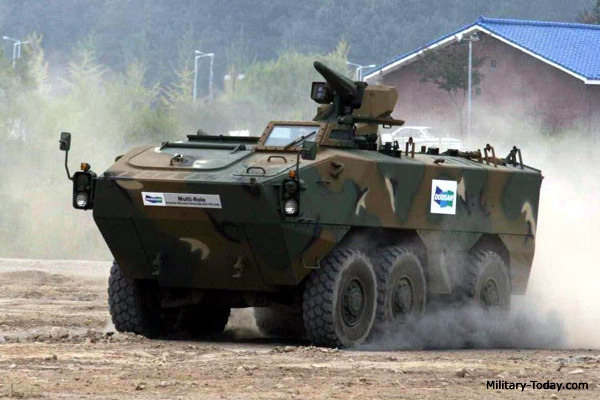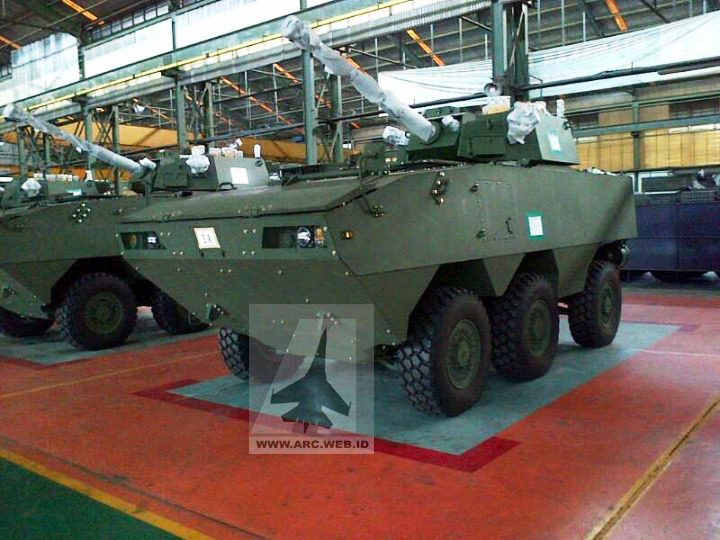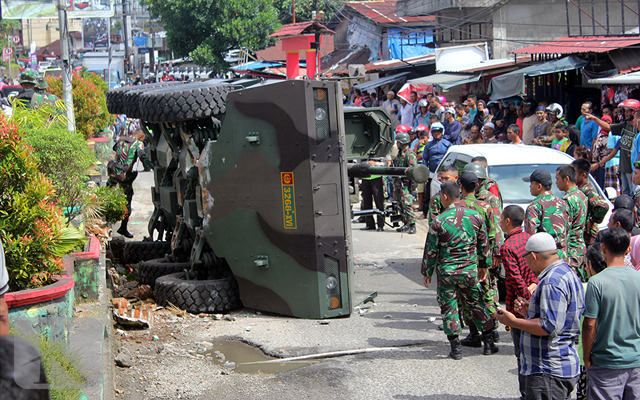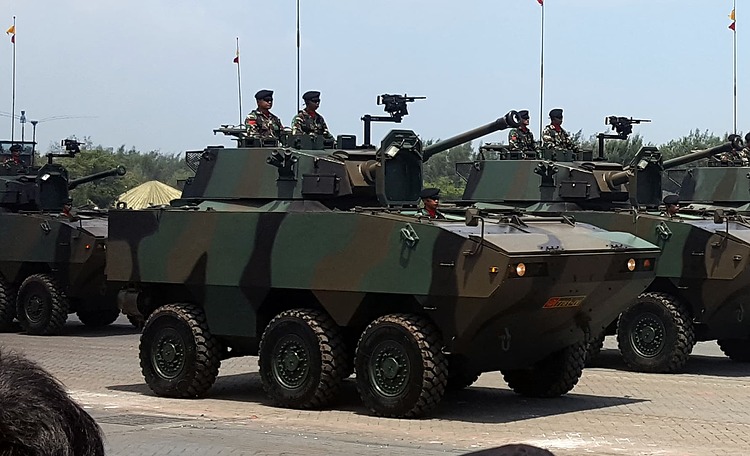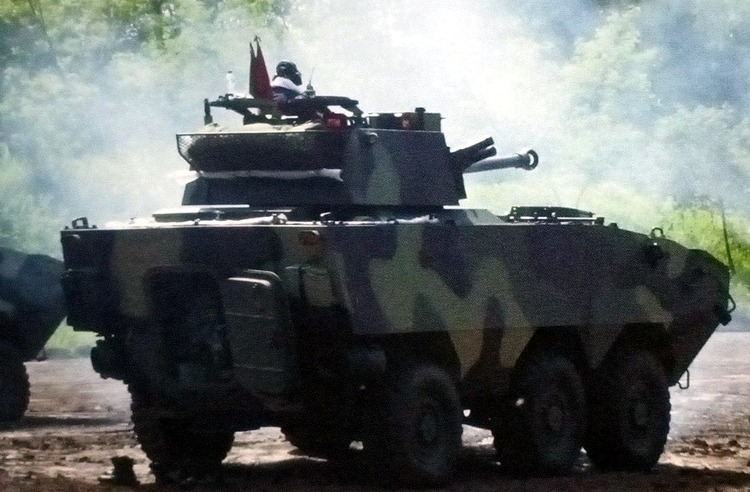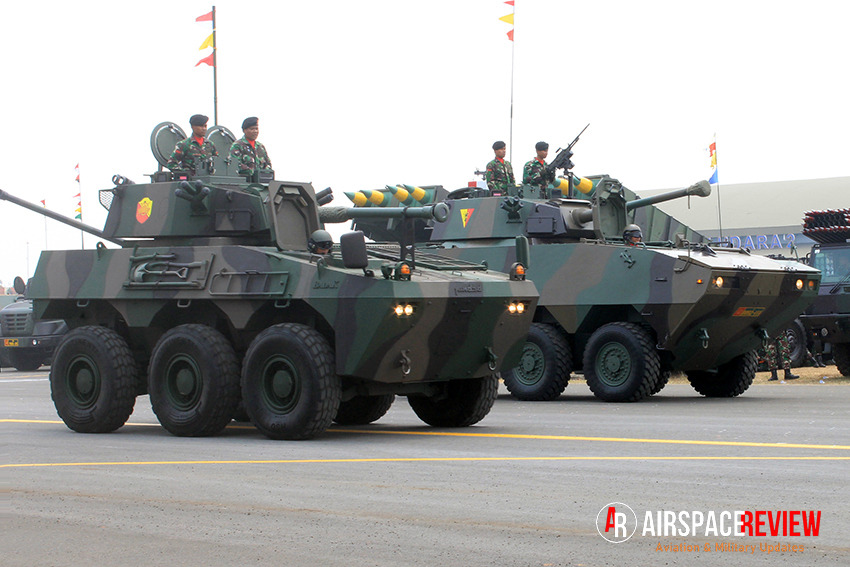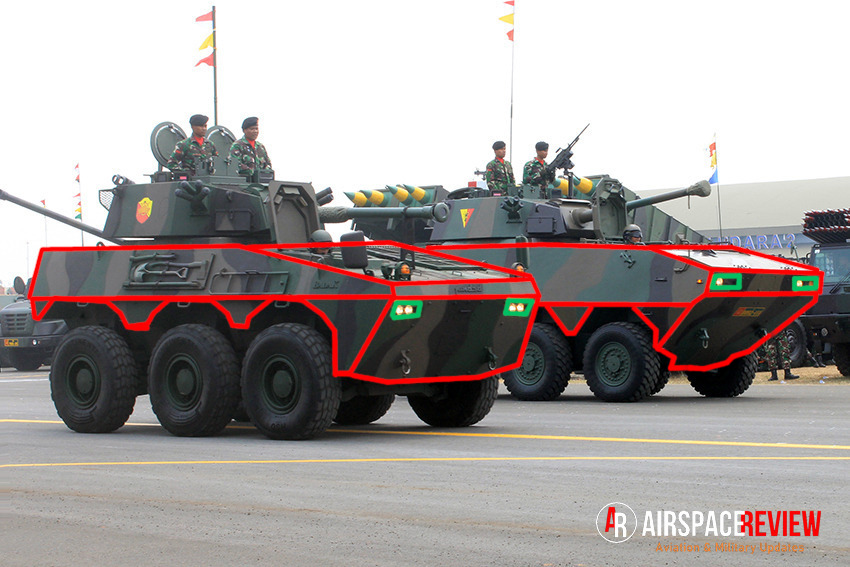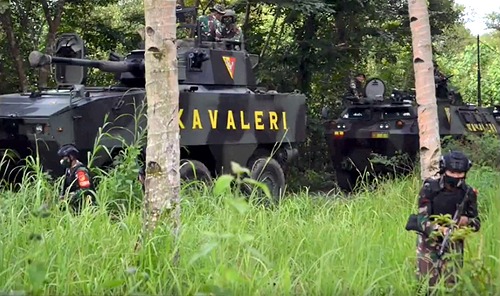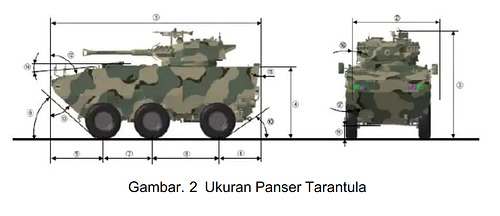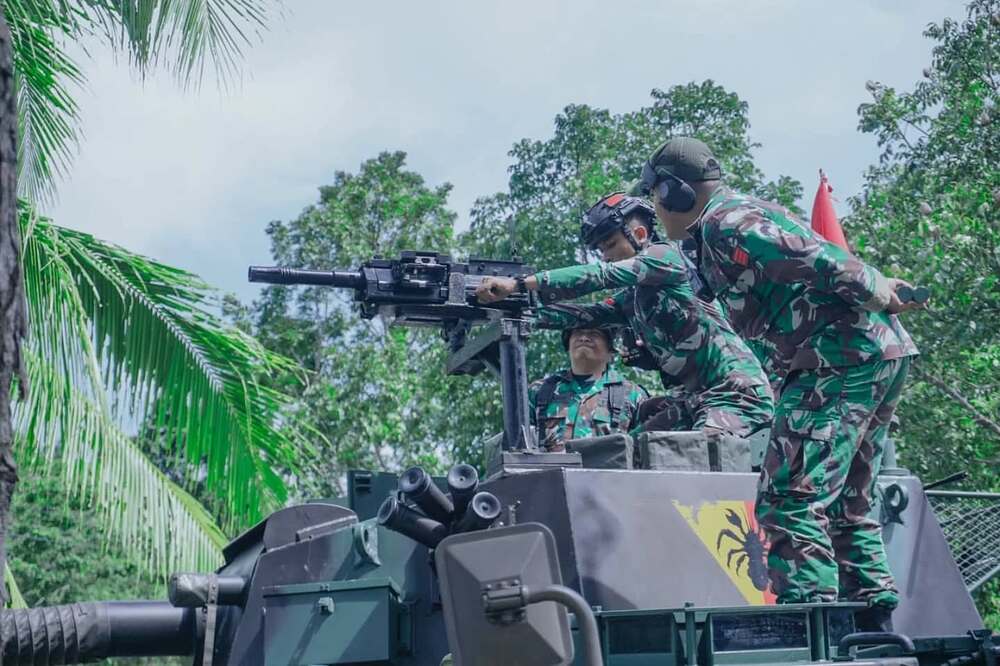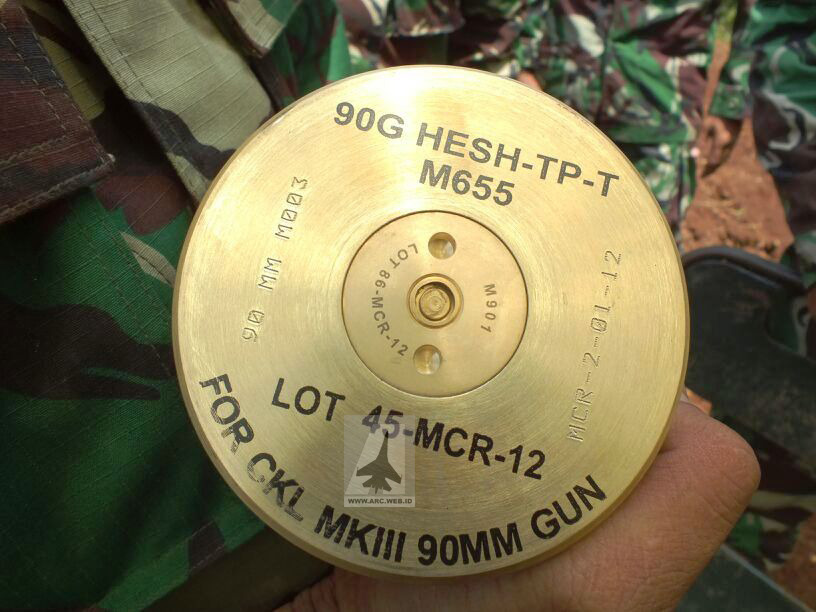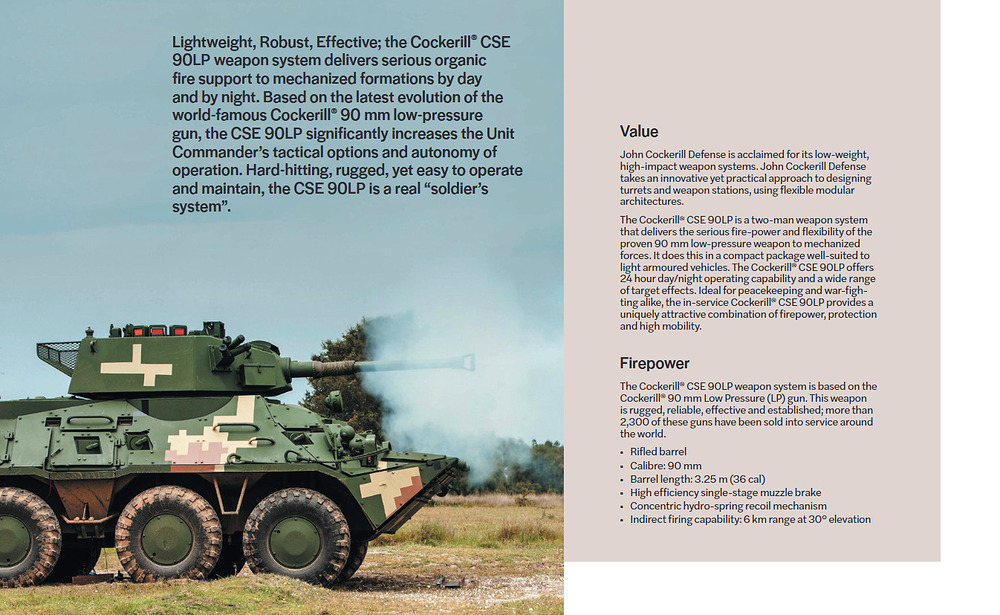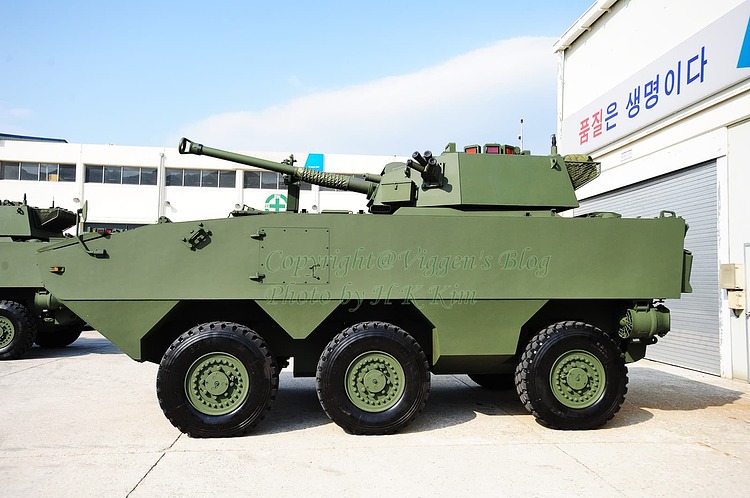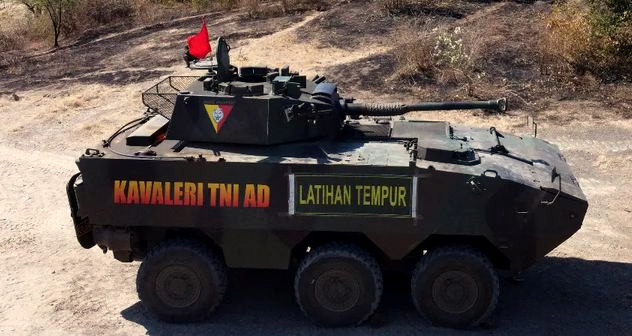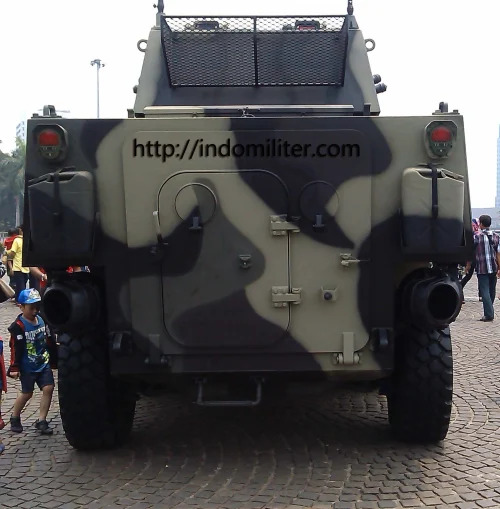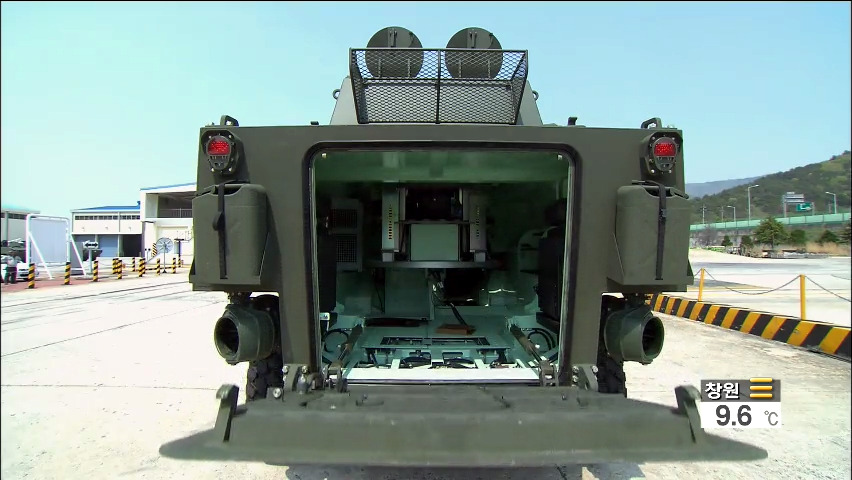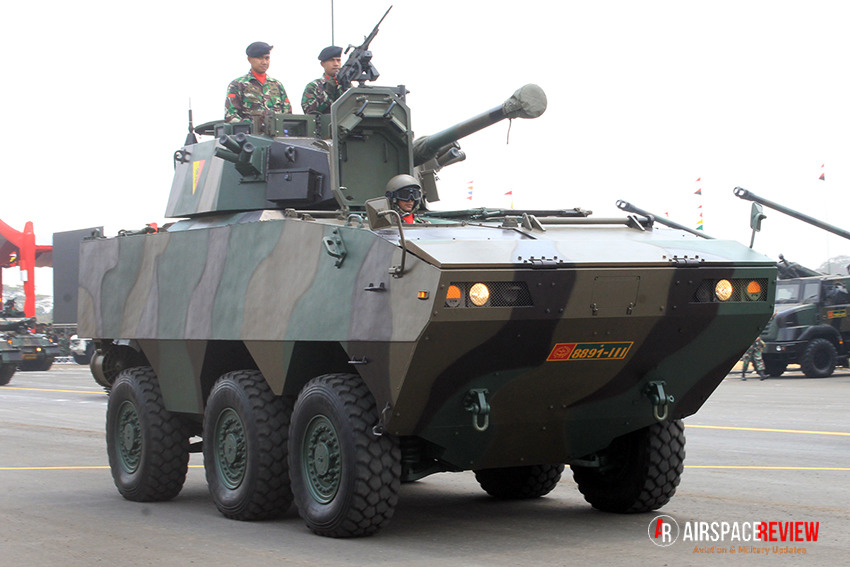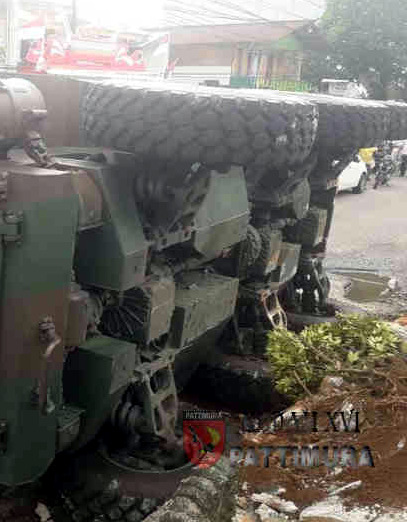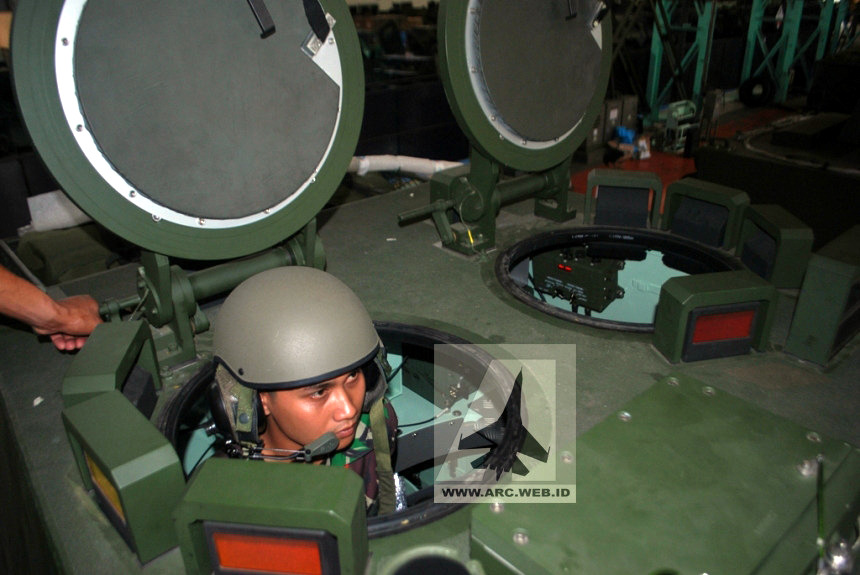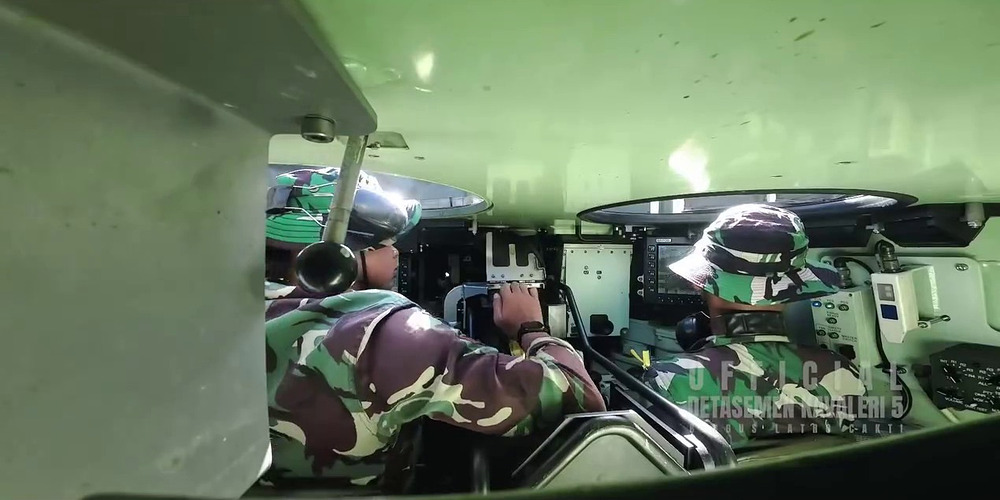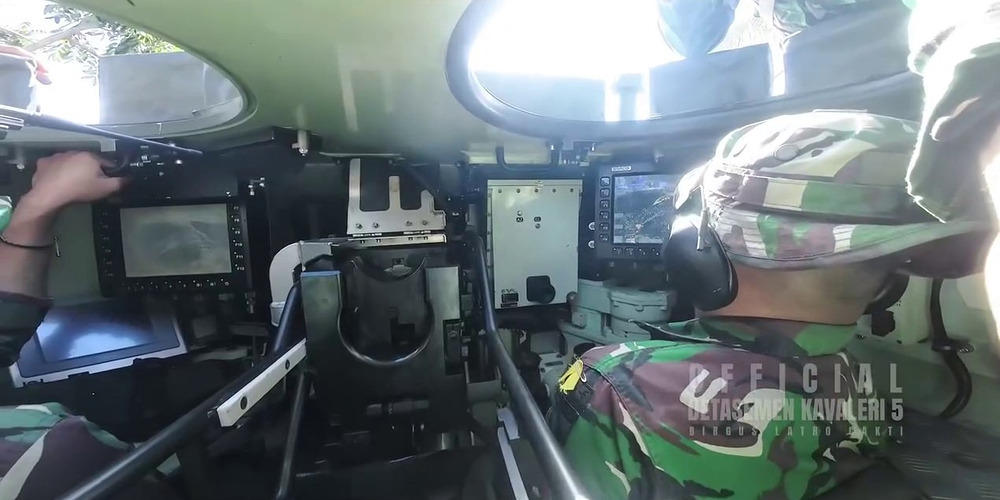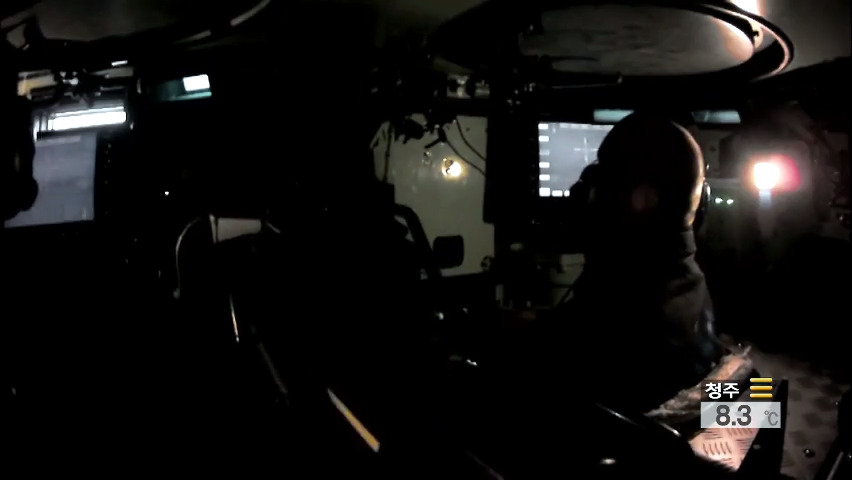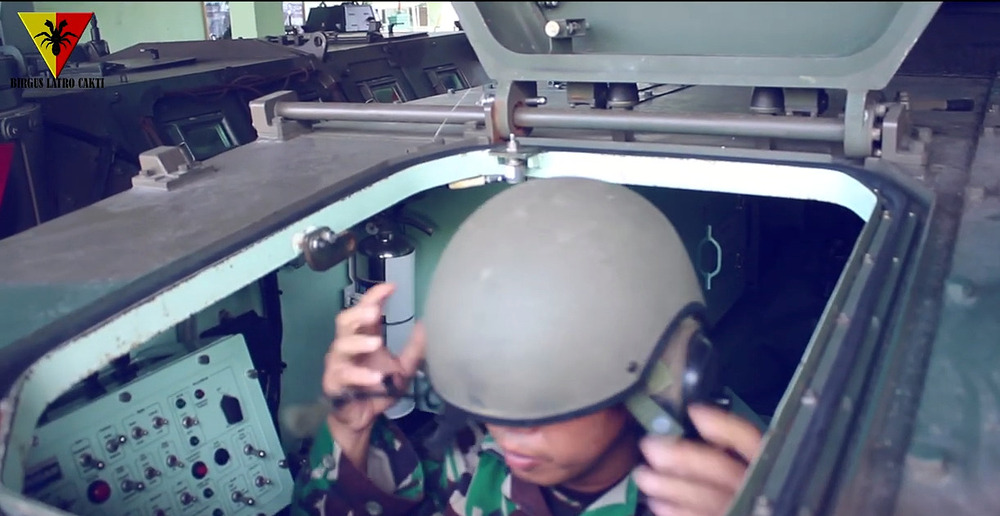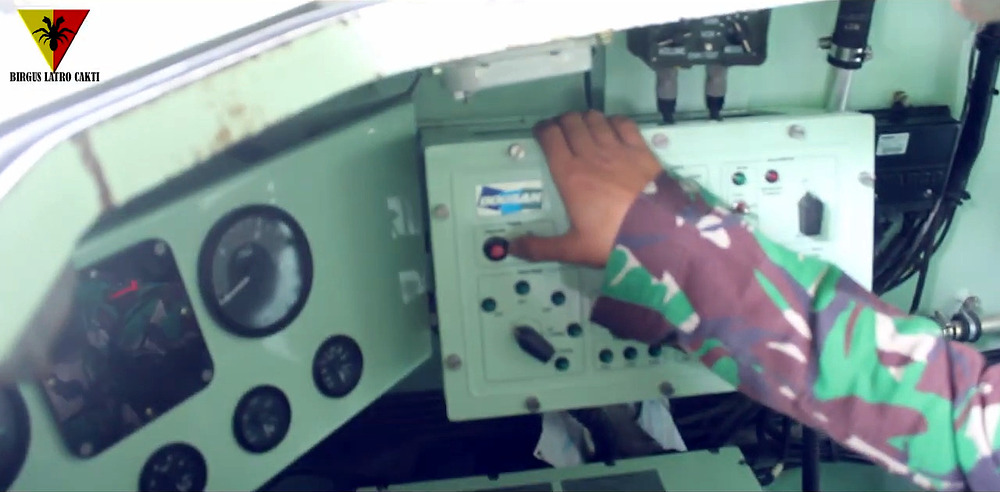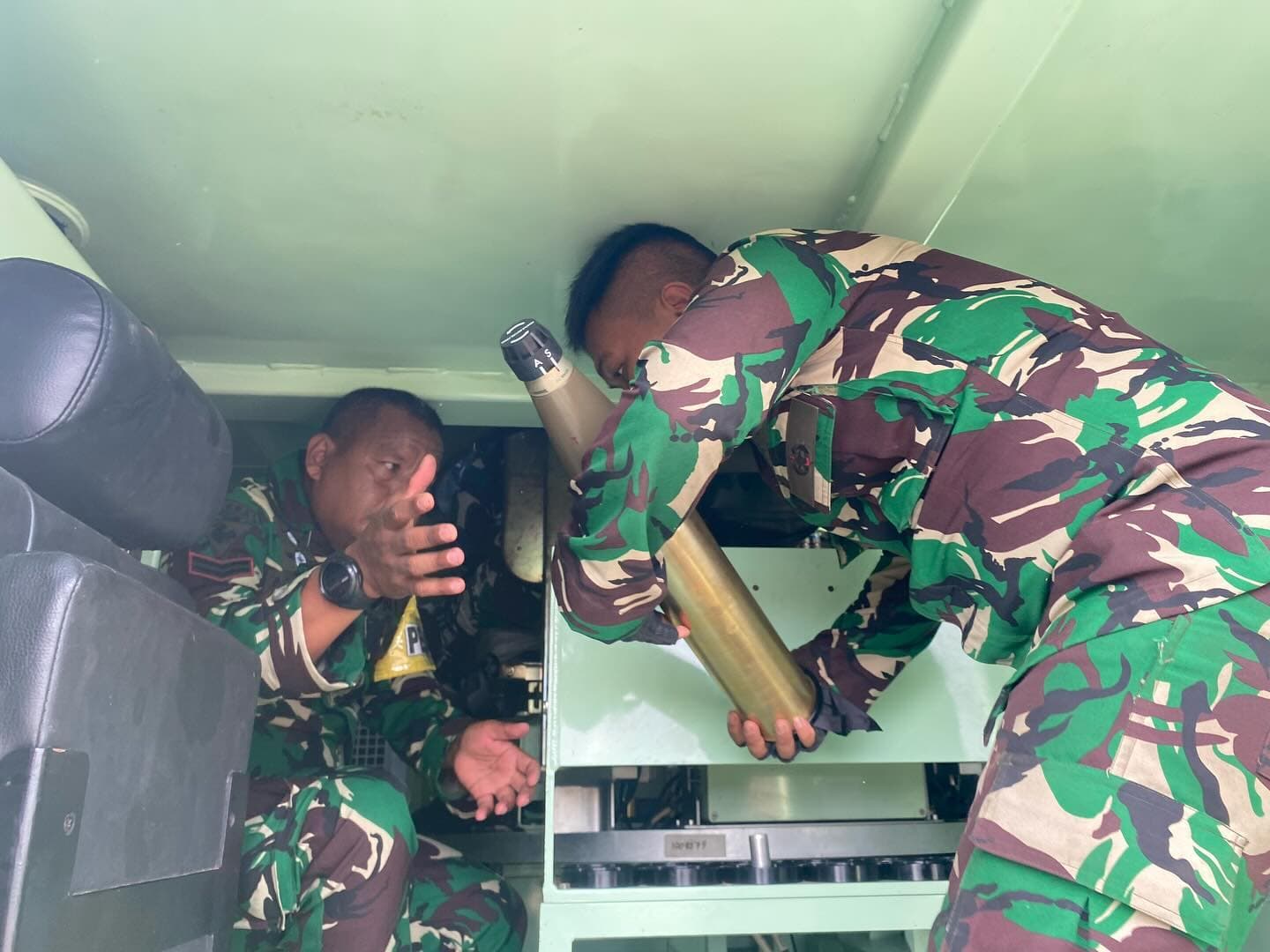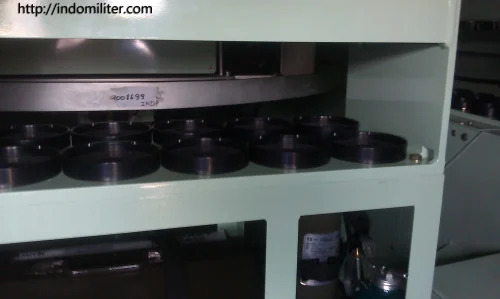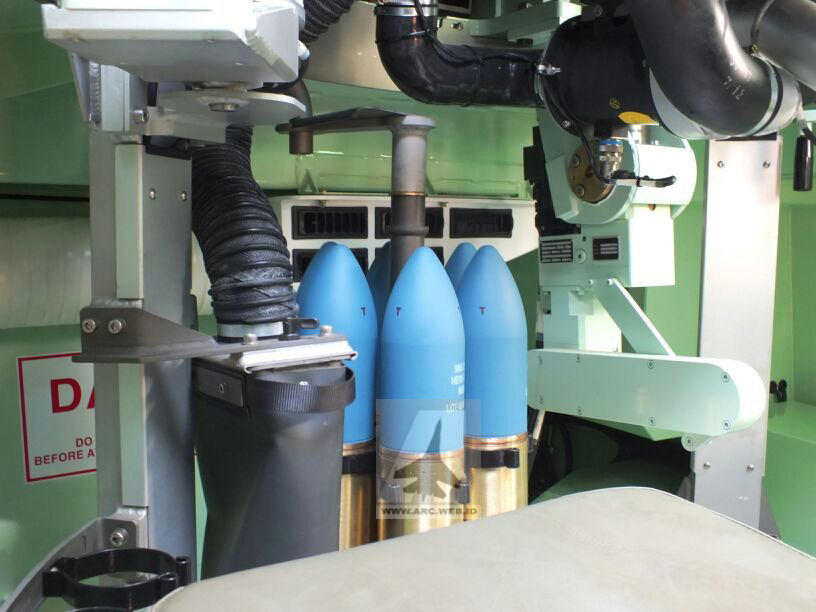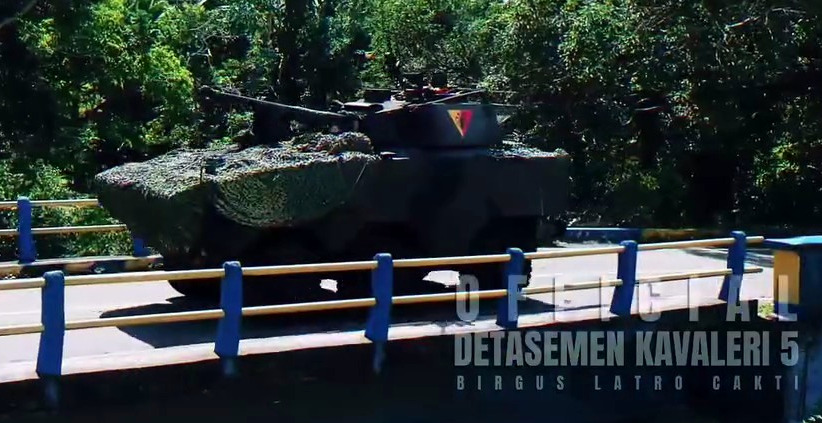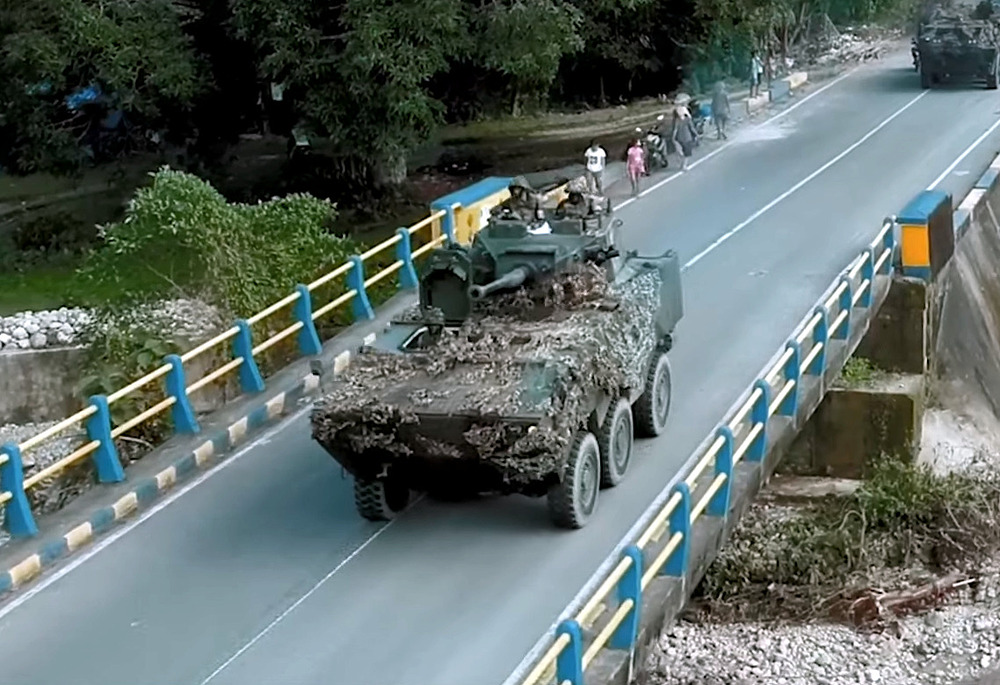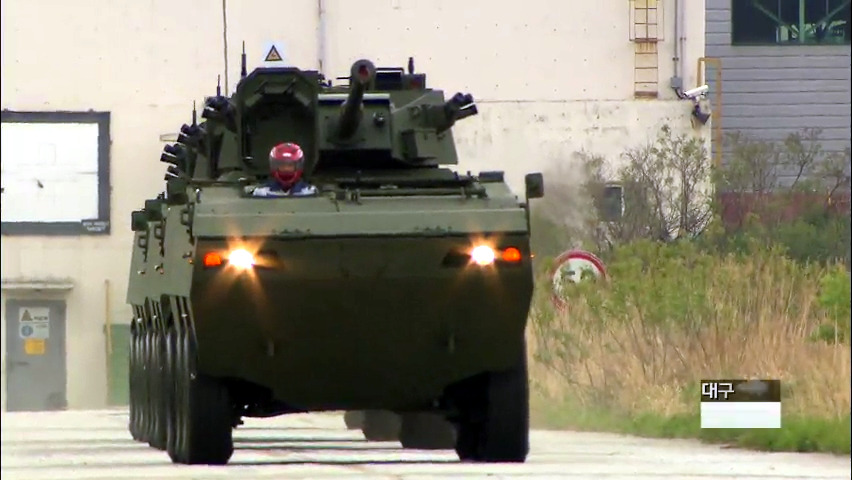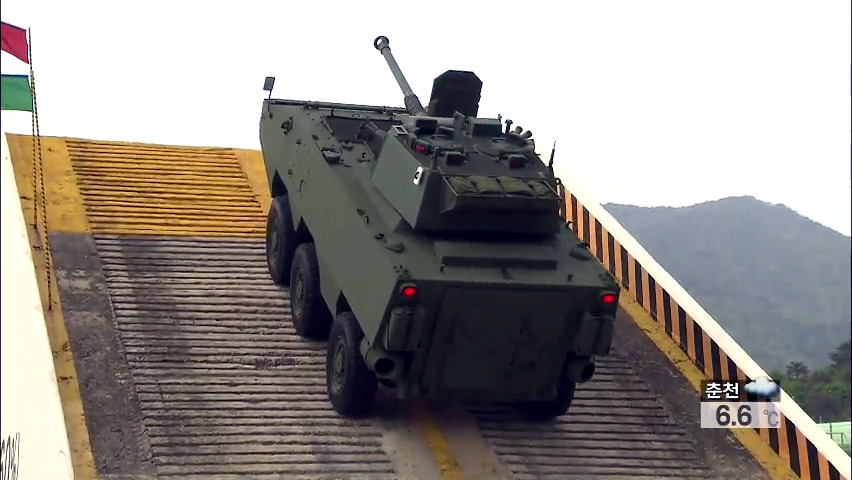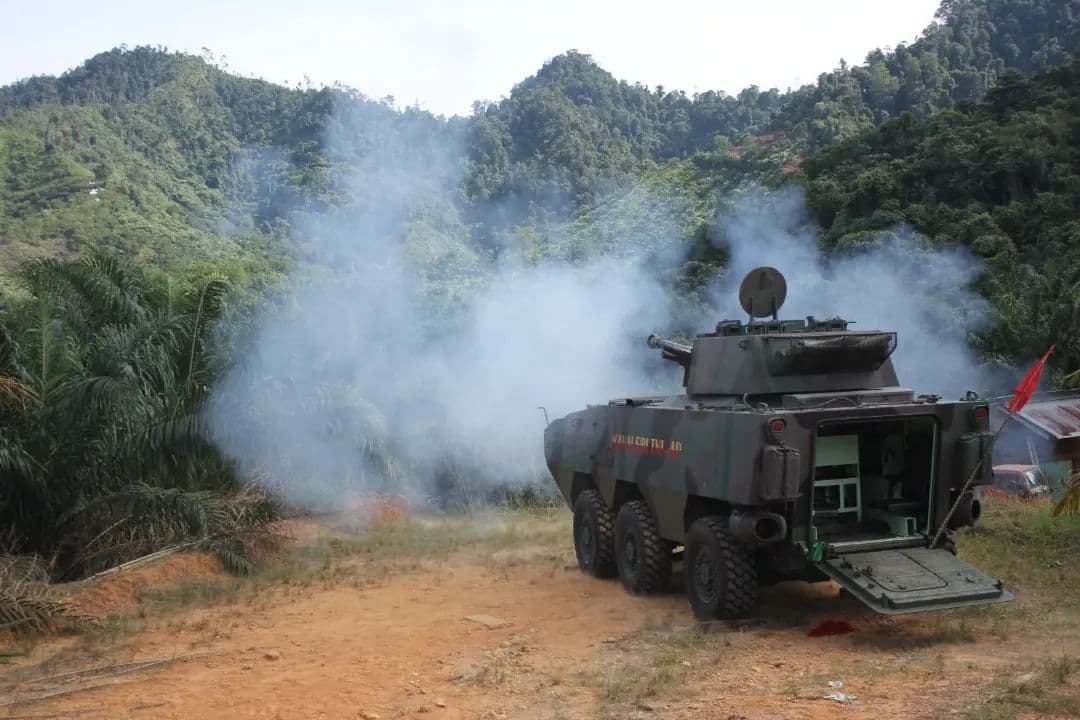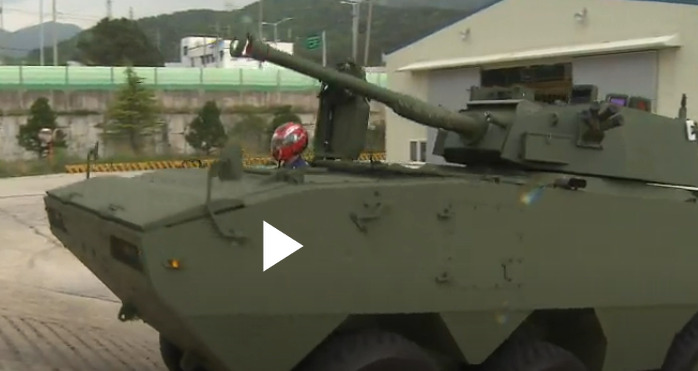Would you like to see this vehicle in-game?
Considering its thermals and laser rangefinder combined with a sub-par armament, what BR do you think this vehicle should be in?
- 7.0 - 7.3
- 7.3 - 7.7
- 7.7 - 8.0
- 8.0 - 8.3
- 8.3 - 8.7
- I voted no
 Tarantula 6x6 (Doosan Black Fox)
Tarantula 6x6 (Doosan Black Fox) 

Hello everyone! Today I would like to suggest the Tarantula 6x6! Now you might be thinking, wait this looks almost identical to the
Badak FSV. But trust me they are different!
Though they look similar, this vehicle is not related to the Badak FSV produced by Pindad. The Badak has the Pindad Anoa 6x6 APC as its base. the Tarantula meanwhile is a further development of the South Korean Doosan DST Black Fox 6x6 APC. Even though they’re not related, their performance can be simply described as quite similar (or even the same), as they both carry the same Cockerill CSE 90LP turret with the 90mm Cockerill MK.3 A1 gun on a 6x6 chassis. It can fire HEAT, HE, HESH as well as APFSDS-T. The vehicle has Day/night sight, Thermals, Laser Range Finder, commander override as well as smoke grenades. In essence the Tarantula can be described as a slightly larger & thicker Badak.
How to tell the difference between the Badak and the Tarantula
Side-by-side comparison (Badak on the left, Tarantula on the right)
Added lines for clarity
The Badak’s fairing has a more rounded shape and the Tarantula has a boxier shape, the front headlights is also placed differently, with the Badak’s headlight at the lower front glacis rather than the top glacis like the Tarantula. The sides is also completely different, with the Badak having a shorter upper side hull than the Tarantula
A. Background
Details
The Tarantula FSV started its life as the Black Fox Armored personnel carrier. It was a private venture developed by Doosan Infracore for both domestic and export markets. The prototype was completed in 2003 and was introduced in 2005 to compete with the Rotem KW1 Scorpion and Samsung Techwin MPV to meet a potential requirement of the South korean Army for a new family of 6x6 and 8x8 configuration armored vehicle, as the army was planning to replace its tracked vehicles for rapid deployment and internal security roles.
Doosan DST Black Fox APC
The Black Fox APC has a crew of three and can carry 9 troops which can exit the vehicle via the rear ramp or roof hatches. In regards to armor, all-around the vehicle are protected from small arms fire and fragmentations and can withstands hits from a 12.7mm round with additional armor plating also available if needed. The vehicle also has a conventional front-mounted engine layout, with it being powered by a diesel engine providing 380 hp. The vehicle has an automatic transmission and steering on the front four wheels. Originally its not amphibious but that option was added later on. Additionally it can be air-transportable by the C-130 Hercules aircraft. Eventually it was decided that Rotem’s design was to be chosen and they were named the K806 & K808.
Even though Doosan lost the competition, they did not give up. They offered the Black Fox to various foreign nations. Finally in 2009 a contract was signed with Indonesia for Doosan to supply 43 Black Fox fitted with a 90mm turret to Indonesia, making this sale the first time a wheeled-armored vehicle has been exported from South Korea. This vehicle would be known in Indonesia as the Tarantula. Originally the procurement was slightly delayed due to the several specification requests from the Indonesians, namely turning the vehicle into fully amphibious with 2 rear-mounted waterjet propellers on the rear, nevertheless the deal continues, however the total amount was reduced to 22 units, with half fully-built units being sent directly from South Korea, and another half being completely broken down in parts and built-up locally by PT Pindad.
Tarantula FSV built by Pindad in its facility
The first pre-production vehicles were delivered for trials in 2011, whereas the actual delivery of production vehicles were in 2012-13. The vehicle’s primary role is for Infantry fire support, meaning its purpose is to engage buildings and field fortifications to support the infantry. Though its 90mm gun is highly effective against lightly armored vehicles, it does not hold up against tanks however. Even with that downside, the Tarantula has a significant tactical mobility with its speed and relatively decent manouverability to counter enemy opposition.
Of course this vehicle is not without its drawbacks. From soldiers accounts comparing the Anoa APC to the Tarantula, it was concluded that due to the higher body, the Tarantula is worse in its manouverability at both dry and wet environment. Its engine is also considered to be subpar to its competitor and in terms of maintenance its also a lot worse due to its electric system and complicated hydraulics. Although the soldiers did highlight its transmission as a positive, as they deemed it more superior to the Anoa, albeit a bit more difficult to maintain.
With its downsides, it’s no surprise that the Cavalry Company hasn’t really been operating the Tarantula as of late, but that is primarily down to two key factors, firstly, its due to a lack of personnel who has sufficient knowledge of the systems on the vehicle, but the second critical factor is primarily down to trauma. With its size and relatively high centre of mass, the vehicle has a tendency to roll on its side. This was demonstrated in 2018, when a Tarantula FSV’s steering was stuck to the left, it crossed a divider into a parallel road at a lower side, resulting in the vehicle flipping on its side and injuring the commander and gunner of the vehicle.
Tarantula 6x6 Flipped due to a hydraulics failure
To this day, Indonesia remain the only country to operate this vehicle. Currently The Indonesian Army has around 22 of these vehicle spread out across many different Cavalry Company of the Army, such as the Kikav (Cavalry Company) 3/TSC & Kikav 10/MSC.
Kikav 10/MSC Combat Readiness Exercise
B. Specifications
Details
Performance
- Crew : 3 (Driver, Gunner, Commander)
- Max Range: 800 km
- Max Climbing Angle: 60% (30.96°)
- Max tilt: 30%
- Wheelbase: 1510 mm
- Max Trench Obstacle: 1.5 m
- Approach Angle: 45°
- Departure Angle: 40°
- Turning Angle: 7.9°
- Max Speed (Sea-speed): 100 km/h (8 km/h)
- Armor thickness: 6mm (protect against 12.7mm)
Dimensions
- Weight (empty): 18 t (16 t)
- Length: 6.8 m
- Width: 2.7 m
- Height: 3.0 m
- Base Clearance: 0.4 m
Engine & Transmission
- Engine: Doosan DL08 6-cylinder Turbo Charger & Intercooler Direct-injection Diesel Engine
- Weight: 750 kg
- Max Power (Max Torque): 400 PS @ 2100 rpm (160 kgm @ 1400 rpm)
- Capacity : 2100 rpm
- Transmission Manufacturer: ZF
- Type: HP600 Series Automatic Transmission
- Input: Torque converter w/ lock-up clutch
- Gears: 6 Forwards, 1 Reverse
- Gear ratio: 5.60/3.43/2.01/1.42/1.0/0.83/0.59 (4.84)
- Input Torque: 1600 Nm
Armament
- Turret: Cockerill CSE 90LP
- Gun: 90mm Cockerill MK.3 MA1 Low-pressure gun
- APFSDS
- HEAT-T
- HESH-T
- HE-T
- 2x 7,62mm PINDAD SM2V2 or FN MAG (Coax & Pintle mount)
- Pintle mount can be changed to either:
- 12.7mm MG or
- 40mm PINDAD SPG-3 Grenade launcher (License-made Singaporean STK 40 AGL)
Armament Image
Cockerill MK.3 MA1
PINDAD SM2-V2
40mm Grenade Launcher can be mounted on the roof
Image of its HESH-T shell
Systems
- STANAG level 1 (can be up-armored to level 4)
- Electro-mechanical gun and turret drive
- Full stabilization
- Laser Range Finder & Ballistic Computer
- Thermals (including gunner’s day sight)
- Gunner’s sight can be overriden by Commander
- Direct-view optics
- Smoke Grenade launchers
- Retractable trim vane
Commander's monitor
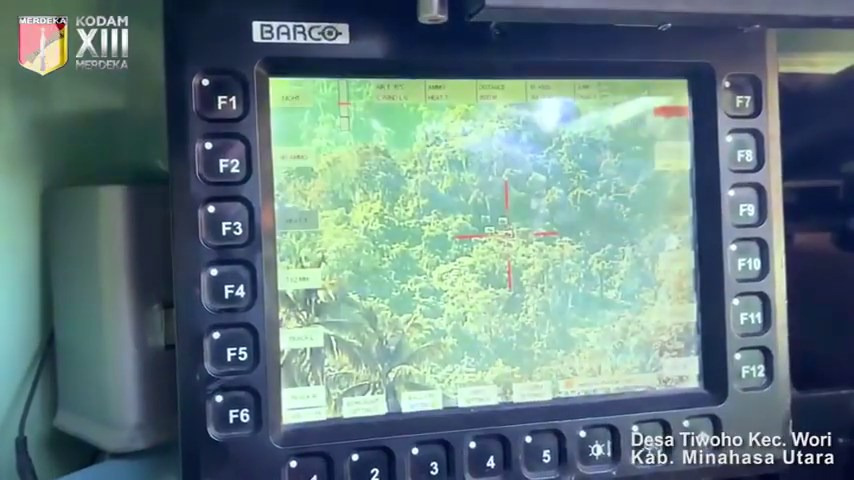
Turret & Ammo Brochure
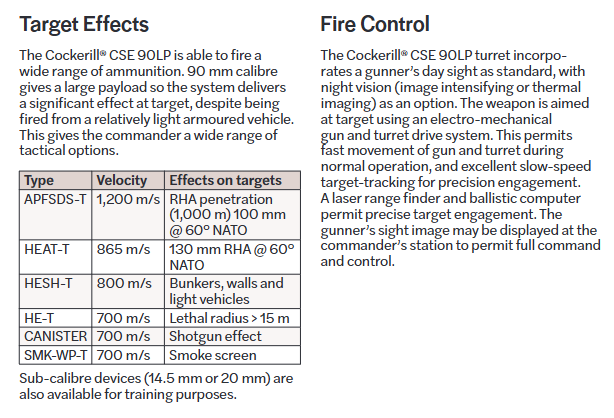
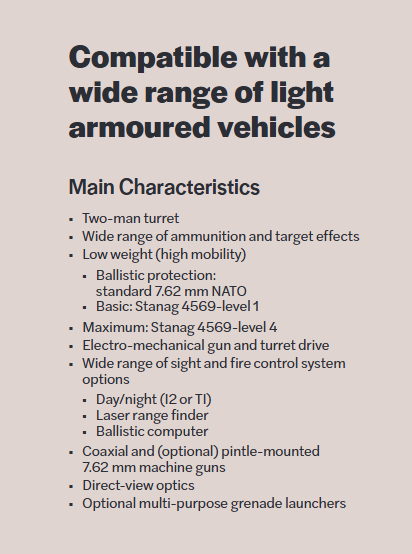
C. More Imagery
Details
Profile
Left
Right
Back
Front
Underside
Crew Compartment
Gunner & Commander’s compartment
Driver’s compartment
Ammunition stowage
More Images
Tarantula 6x6 with camouflage netting
Tarantula during trials in South Korea
Tarantula 6x6 firing
Videos
Inside the vehicle
Firing
https://www.youtube.com/watch?v=GS7EaeO2_Qw
EPILEPSY WARNING starting at 0:45
https://www.youtube.com/watch?v=kooPOajyFMI
D. Sources
Details
Any suggestions or corrections would be highly appreciated!
Additionally, you can check out more Indonesian suggestions below!
Tarantula 6x6 (Doosan Black Fox)

